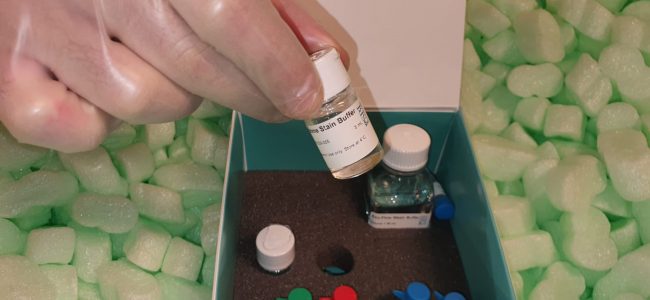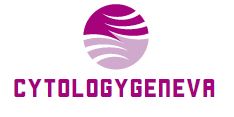The affiliation of sure sorts of human papillomavirus with cervical carcinoma is effectively established. Human papillomavirus testing is now routinely used to display screen for cervical carcinoma and precursor lesions of the cervix (cotesting and reflex testing) and these outcomes are thought of in affected person triage and administration. To present details about present laboratory practices in human papillomavirus testing and consensus greatest follow statements primarily based on outcomes from the College of American Pathologists’ laboratory-based survey funded by the Centers for Disease Control and Prevention.
The College of American Pathologists submitted a paper-based survey to 1245 laboratories in the United States. After overview of the preliminary outcomes, follow-up Web-based survey outcomes, and a literature overview by an skilled working group, consensus greatest follow statements have been constructed by working group members for presentation at a nationwide consensus convention.
These greatest follow statements have been mentioned and then voted upon by convention members. A complete of 525 laboratories responded to survey questions on human papillomavirus ordering and monitoring practices, whereas 546 responded to the total survey. In most laboratories (87.6%), the high-risk human papillomavirus check is ordered as a reflex check by suppliers. A minority of laboratories (11.9%) routinely bundle low- and high-risk human papillomavirus exams.
Most laboratories (84.4%) don’t restrict testing in sufferers with atypical squamous cells to ladies older than 20 years. More than half of laboratories (53.3%) monitor human papillomavirus optimistic charges in Papanicolaou exams with atypical squamous cells of undetermined significance. It is just not applicable for laboratories to supply low-risk human papillomavirus testing for any scientific circumstance in gynecologic cytology. Laboratories shouldn’t order human papillomavirus testing to resolve diagnostic discrepancies.
College of American Pathologists Gynecologic Cytopathology Quality Consensus Conference on good laboratory practices in gynecologic cytology: background, rationale, and group.
Gynecologic cytopathology is a closely regulated discipline, with Clinical Laboratory Improvement Amendments of 1988 mandating the assortment of many high quality metrics. There is a scarcity of consensus relating to strategies to gather, monitor, and benchmark these information and how these information must be used in a top quality assurance program. Furthermore, the introduction of human papilloma virus testing and proficiency testing has supplied extra information to observe.
To decide good laboratory practices in high quality assurance of gynecologic cytopathology. Data have been collected by way of a written survey consisting of 98 questions submitted to 1245 Clinical Laboratory Improvement Amendments-licensed or Department of Defense laboratories. There have been 541 usable responses. Additional enter was sought by way of a Web posting of outcomes and questions on the College of American Pathologists Web web site.
Four senior authors who authored the survey and 28 cytopathologists and cytotechnologists have been assigned to five working teams to investigate information and current statements on good laboratory practices in gynecologic cytopathology at the College of American Pathologists Gynecologic Cytopathology Quality Consensus Conference. Ninety-eight attendees at the College of American Pathologists Gynecologic Cytopathology Quality Consensus Conference mentioned and voted on good laboratory follow statements to acquire consensus.
This paper describes the rationale, background, course of, and strengths and limitations of a collection of papers that summarize good laboratory follow statements in high quality assurance in gynecologic cytopathology. It is a priceless broad measure of laboratory high quality to observe the human papillomavirus-positive charges in Papanicolaou exams with atypical squamous cells.
Harnessing the information we’ve gained on the cell cycle disruption attributable to human papillomaviruses (HPV) will seemingly result in improved screening modalities for cervical most cancers and its precursors. An simply utilized biomarker that has excessive specificity and sensitivity would symbolize a gorgeous various or complement to cytology and HPV testing. To date, a quantity of promising markers have been investigated. These embrace p16(INK4A), MIB-1, BD-ProEx C, and L1.
Newer potentialities contain a spread of gene merchandise related to aberrations of chromosome 3q, similar to telomerase, p63, and PIK3CA, as effectively the mixture of biomarkers similar to p16(INK4A) and MIB-1 in the identical assay. Although none of them has but been integrated into screening algorithms or discovered its approach into routine follow, their efficiency traits stay a spotlight of present investigations. This overview summarizes what we all know and the place we hope to go in translating primary pathobiology into scientific follow.

Individual estimated sensitivity and workload for handbook screening of SurePath gynecologic cytology.
Data correlating particular person screening sensitivity in gynecologic cytology and workload is restricted. We in contrast the estimated sensitivity of handbook screening of SurePath slides with particular person workload. Estimated sensitivity decided by fast prescreening was correlated with whole workload in a laboratory performing handbook screening of SurePath preparations for a 1 12 months interval. There have been 12 CTs with a complete day by day workload ranging from 8-35 slides.
The imply estimated sensitivity for SurePath was 97.0% (vary 91-100%). The imply estimated sensitivity for the lowest half workload (8-23 slides/day) was considerably greater than that for the highest half workload (23-35 slides/day) (98.Three versus 95.7%, P ≤ 0.001). The highest workload that achieved 100% estimated sensitivity was 30 slides/day. For handbook screening of SurePath slides, particular person estimated sensitivity is correlated with workload even at comparatively low day by day workloads.
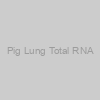 Pig Lung Total RNA |
|
PR-601 |
Zyagen |
0.1mg |
EUR 160 |
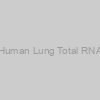 Human Lung Total RNA |
|
HR-601 |
Zyagen |
0.05mg |
EUR 172 |
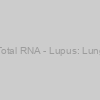 Total RNA - Lupus: Lung |
|
R1236152Lup-50 |
Biochain |
50 ug |
EUR 460 |
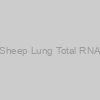 Sheep Lung Total RNA |
|
SR-601 |
Zyagen |
0.1mg |
EUR 160 |
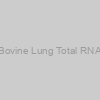 Bovine Lung Total RNA |
|
BR-601 |
Zyagen |
0.1mg |
EUR 160 |
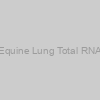 Equine Lung Total RNA |
|
ER-601 |
Zyagen |
0.1mg |
EUR 195 |
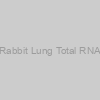 Rabbit Lung Total RNA |
|
TR-601 |
Zyagen |
0.1mg |
EUR 160 |
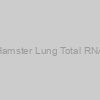 Hamster Lung Total RNA |
|
AR-601 |
Zyagen |
0.1mg |
EUR 160 |
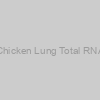 Chicken Lung Total RNA |
|
CR-601 |
Zyagen |
0.1mg |
EUR 160 |
 Total RNA - Rat Normal Tissue: Lung |
|
R1434152-50 |
Biochain |
50 ug |
EUR 156 |
 Rat Mammary Gland, E20 Total RNA |
|
RR-414-20 |
Zyagen |
0.05mg |
EUR 160 |
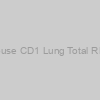 Mouse CD1 Lung Total RNA |
|
MR-601 |
Zyagen |
0.1mg |
EUR 160 |
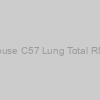 Mouse C57 Lung Total RNA |
|
MR-601-C57 |
Zyagen |
0.1mg |
EUR 180 |
 Guinea Pig Lung Total RNA |
|
GR-601 |
Zyagen |
0.1mg |
EUR 160 |
 Mouse Balbc Lung Total RNA |
|
MR-601-BLC |
Zyagen |
0.1mg |
EUR 180 |
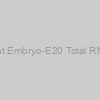 Rat Embryo-E20 Total RNA |
|
RR-104-20 |
Zyagen |
0.2mg |
EUR 160 |
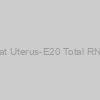 Rat Uterus-E20 Total RNA |
|
RR-411-20 |
Zyagen |
0.05mg |
EUR 160 |
 Monkey Lung Total RNA, Rhesus |
|
UR-601 |
Zyagen |
0.1mg |
EUR 195 |
 Rat Placenta-E20 Total RNA |
|
RR-413-20 |
Zyagen |
0.05mg |
EUR 160 |
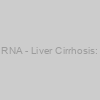 Total RNA - Liver Cirrhosis: Lung |
|
R1236152Lcs-50 |
Biochain |
50 ug |
EUR 460 |
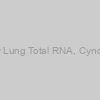 Monkey Lung Total RNA, Cynomolgus |
|
KR-601 |
Zyagen |
0.1mg |
EUR 195 |
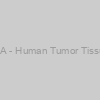 Total RNA - Human Tumor Tissue: Lung |
|
R1235152-50 |
Biochain |
50 ug |
EUR 480 |
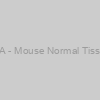 Total RNA - Mouse Normal Tissue: Lung |
|
R1334152-50 |
Biochain |
50 ug |
EUR 156 |
 Total RNA - Human Adult Normal Tissue: Lung |
|
R1234152-50 |
Biochain |
50 ug |
EUR 221 |
 Normal Tissue: Lung) Total RNA - Monkey (Rhesus) Normal Tissue: Lung |
|
R1534152-50 |
Biochain |
50 ug |
EUR 229 |
 Normal Tissue: Lung) Total RNA - Monkey (Cynomolgus) Normal Tissue: Lung |
|
R1534152-Cy |
Biochain |
50 ug |
EUR 229 |
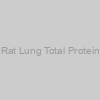 Rat Lung Total Protein |
|
RT-601 |
Zyagen |
1mg |
EUR 153 |
 FFPE Total RNA - Human Adult Normal Tissue: Lung |
|
R2234152 |
Biochain |
1 ug |
EUR 744 |
 Guinea pig Embryo-E20 Total RNA |
|
GR-104-20 |
Zyagen |
0.1mg |
EUR 192 |
 Guinea pig Placenta-E20 Total RNA |
|
GR-413-20 |
Zyagen |
0.1mg |
EUR 192 |
 Rat WS Lung Total Protein |
|
RT-601-WS |
Zyagen |
1mg |
EUR 153 |
 Total RNA - Human Adult Normal Tissue: Lung, 0 shipping |
|
ATR1234152-50 |
Biochain |
50 ug |
EUR 241 |
 Rat Skin E20 Total Protein |
|
RT-101-20 |
Zyagen |
1mg |
EUR 177 |
 Rat Brain E20 Total Protein |
|
RT-201-20 |
Zyagen |
1mg |
EUR 177 |
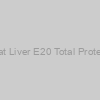 Rat Liver E20 Total Protein |
|
RT-314-20 |
Zyagen |
1mg |
EUR 177 |
 Rat Heart E20 Total Protein |
|
RT-801-20 |
Zyagen |
1mg |
EUR 177 |
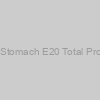 Rat Stomach E20 Total Protein |
|
RT-302-20 |
Zyagen |
1mg |
EUR 177 |
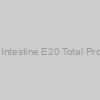 Rat Intestine E20 Total Protein |
|
RT-306-20 |
Zyagen |
1mg |
EUR 177 |
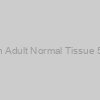 Total RNA - Human Adult Normal Tissue 5 Donor Pool: Lung |
|
R1234152-P |
Biochain |
50 ug |
EUR 443 |
 Rat Lung 1 Day Total Protein |
|
RT-601-D1 |
Zyagen |
1mg |
EUR 177 |
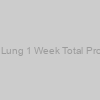 Rat Lung 1 Week Total Protein |
|
RT-601-W1 |
Zyagen |
1mg |
EUR 177 |
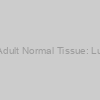 Total RNA - Human Adult Normal Tissue: Lung: Left Lower Lobe |
|
R1234155-50 |
Biochain |
50 ug |
EUR 221 |
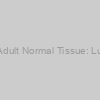 Total RNA - Human Adult Normal Tissue: Lung: Left Upper Lobe |
|
R1234156-50 |
Biochain |
50 ug |
EUR 221 |
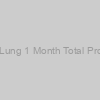 Rat Lung 1 Month Total Protein |
|
RT-601-M1 |
Zyagen |
1mg |
EUR 177 |
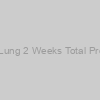 Rat Lung 2 Weeks Total Protein |
|
RT-601-W2 |
Zyagen |
1mg |
EUR 177 |
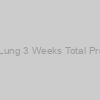 Rat Lung 3 Weeks Total Protein |
|
RT-601-W3 |
Zyagen |
1mg |
EUR 177 |
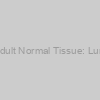 Total RNA - Human Adult Normal Tissue: Lung: Right Lower Lobe |
|
R1234157-50 |
Biochain |
50 ug |
EUR 221 |
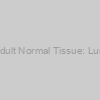 Total RNA - Human Adult Normal Tissue: Lung: Right Upper Lobe |
|
R1234159-50 |
Biochain |
50 ug |
EUR 221 |
 Guinea pig Mammary Gland-E20 Total RNA |
|
GR-414-20 |
Zyagen |
0.1mg |
EUR 192 |
 Rat Lung 12 Months Total Protein |
|
RT-601-M12 |
Zyagen |
1mg |
EUR 177 |
 Rat Lung 2 Months Total Protein |
|
RT-601-M2 |
Zyagen |
1mg |
EUR 177 |
 Rat Lung 3 Months Total Protein |
|
RT-601-M3 |
Zyagen |
1mg |
EUR 177 |
 Rat Lung 6 Months Total Protein |
|
RT-601-M6 |
Zyagen |
1mg |
EUR 177 |
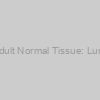 Total RNA - Human Adult Normal Tissue: Lung: Right Middle Lobe |
|
R1234158-50 |
Biochain |
50 ug |
EUR 221 |
 Rat S. Muscles E20 Total Protein |
|
RT-102-20 |
Zyagen |
1mg |
EUR 177 |
 Rat Mammary Gland, E20 Total Protein |
|
RT-414-20 |
Zyagen |
0.5mg |
EUR 153 |
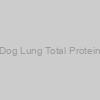 Dog Lung Total Protein |
|
DT-601 |
Zyagen |
1mg |
EUR 176 |
 Cat Lung Total Protein |
|
FT-601 |
Zyagen |
1mg |
EUR 176 |
 Pig Lung Total Protein |
|
PT-601 |
Zyagen |
1mg |
EUR 153 |
 Matched Pair - Total RNA - Human Primary Tumor and Normal Tissue: Lung |
|
R8235152-PP-10 |
Biochain |
2x10 ug |
EUR 500 |
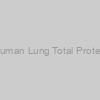 Human Lung Total Protein |
|
HT-601 |
Zyagen |
1mg |
EUR 176 |
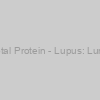 Total Protein - Lupus: Lung |
|
P1236152Lup |
Biochain |
1 mg |
EUR 559 |
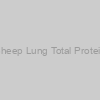 Sheep Lung Total Protein |
|
ST-601 |
Zyagen |
1mg |
EUR 153 |
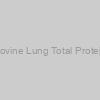 Bovine Lung Total Protein |
|
BT-601 |
Zyagen |
1mg |
EUR 153 |
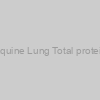 Equine Lung Total protein |
|
ET-601 |
Zyagen |
1mg |
EUR 176 |
 Total Protein - Asthma: Lung |
|
P1236152Ld-1 |
Biochain |
1 mg |
EUR 542 |
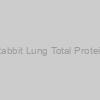 Rabbit Lung Total Protein |
|
TT-601 |
Zyagen |
1mg |
EUR 153 |
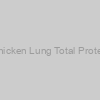 Chicken Lung Total Protein |
|
CT-601 |
Zyagen |
1mg |
EUR 153 |
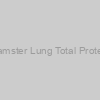 Hamster Lung Total Protein |
|
AT-601 |
Zyagen |
1mg |
EUR 153 |
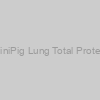 MiniPig Lung Total Protein |
|
NT-601 |
Zyagen |
1mg |
EUR 176 |
 Matched Pair - Total RNA - Human Primary and Metastatic Tumor Tissue: Lung |
|
R8235152-PM-10 |
Biochain |
2x10 ug |
EUR 773 |
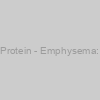 Total Protein - Emphysema: Lung |
|
P1236152Ld-3 |
Biochain |
1 mg |
EUR 542 |
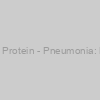 Total Protein - Pneumonia: Lung |
|
P1236152Ld-4 |
Biochain |
1 mg |
EUR 542 |
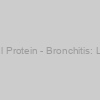 Total Protein - Bronchitis: Lung |
|
P1236152Ld-2 |
Biochain |
1 mg |
EUR 542 |
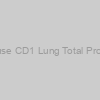 Mouse CD1 Lung Total Protein |
|
MT-601 |
Zyagen |
1mg |
EUR 153 |
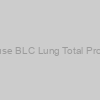 Mouse BLC Lung Total Protein |
|
MT-601-BLC |
Zyagen |
1mg |
EUR 180 |
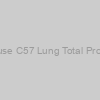 Mouse C57 Lung Total Protein |
|
MT-601-C57 |
Zyagen |
1mg |
EUR 180 |
 Guinea Pig Lung Total Protein |
|
GT-601 |
Zyagen |
1mg |
EUR 153 |
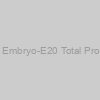 Rat Embryo-E20 Total Protein |
|
RT-104-20 |
Zyagen |
1mg |
EUR 153 |
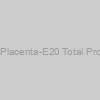 Rat Placenta-E20 Total Protein |
|
RT-413-20 |
Zyagen |
0.5mg |
EUR 153 |
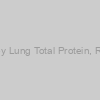 Monkey Lung Total Protein, Rhesus |
|
UT-601 |
Zyagen |
1mg |
EUR 176 |
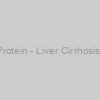 Total Protein - Liver Cirrhosis: Lung |
|
P1236152Lcs |
Biochain |
1 mg |
EUR 542 |
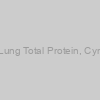 Monkey Lung Total Protein, Cynomolgus |
|
KT-601 |
Zyagen |
1mg |
EUR 176 |
 Rat Mammary Gland, E12 Total RNA |
|
RR-414-12 |
Zyagen |
0.05mg |
EUR 160 |
 Rat Mammary Gland, E13 Total RNA |
|
RR-414-13 |
Zyagen |
0.05mg |
EUR 160 |
 Rat Mammary Gland, E14 Total RNA |
|
RR-414-14 |
Zyagen |
0.05mg |
EUR 160 |
 Rat Mammary Gland, E15 Total RNA |
|
RR-414-15 |
Zyagen |
0.05mg |
EUR 160 |
 Rat Mammary Gland, E16 Total RNA |
|
RR-414-16 |
Zyagen |
0.05mg |
EUR 160 |
 Rat Mammary Gland, E17 Total RNA |
|
RR-414-17 |
Zyagen |
0.05mg |
EUR 160 |
 Rat Mammary Gland, E18 Total RNA |
|
RR-414-18 |
Zyagen |
0.05mg |
EUR 160 |
 Rat Mammary Gland, E19 Total RNA |
|
RR-414-19 |
Zyagen |
0.05mg |
EUR 160 |
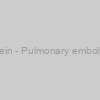 Total Protein - Pulmonary embolism: Lung |
|
P1236152Ld-5 |
Biochain |
1 mg |
EUR 542 |
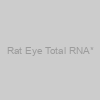 Rat Eye Total RNA* |
|
RR-106 |
Zyagen |
0.05mg |
EUR 160 |
 Rat Skin Total RNA |
|
RR-101 |
Zyagen |
0.05mg |
EUR 160 |
 Rat Pons Total RNA |
|
RR-207 |
Zyagen |
0.025mg |
EUR 160 |
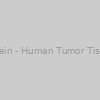 Total Protein - Human Tumor Tissue: Lung |
|
P1235152 |
Biochain |
1 mg |
EUR 357 |
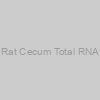 Rat Cecum Total RNA |
|
RR-310 |
Zyagen |
0.1mg |
EUR 160 |
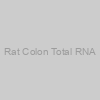 Rat Colon Total RNA |
|
RR-311 |
Zyagen |
0.1mg |
EUR 160 |
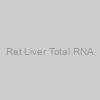 Rat Liver Total RNA |
|
RR-314 |
Zyagen |
0.1mg |
EUR 160 |
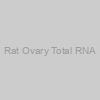 Rat Ovary Total RNA |
|
RR-406 |
Zyagen |
0.025mg |
EUR 160 |
 Rat Penis Total RNA |
|
RR-416 |
Zyagen |
0.05mg |
EUR 160 |
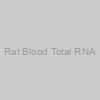 Rat Blood Total RNA |
|
RR-705 |
Zyagen |
0.025mg |
EUR 267 |
 Rat Aorta Total RNA |
|
RR-807 |
Zyagen |
0.025mg |
EUR 214 |
 Total Protein - Mouse Normal Tissue: Lung |
|
P1334152 |
Biochain |
1 mg |
EUR 216 |
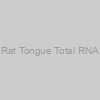 Rat Tongue Total RNA |
|
RR-105 |
Zyagen |
0.1mg |
EUR 160 |
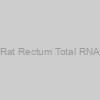 Rat Rectum Total RNA |
|
RR-312 |
Zyagen |
0.1mg |
EUR 160 |
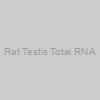 Rat Testis Total RNA |
|
RR-401 |
Zyagen |
0.1mg |
EUR 160 |
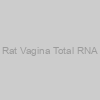 Rat Vagina Total RNA |
|
RR-412 |
Zyagen |
0.05mg |
EUR 160 |
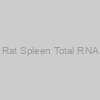 Rat Spleen Total RNA |
|
RR-701 |
Zyagen |
0.1mg |
EUR 160 |
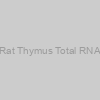 Rat Thymus Total RNA |
|
RR-702 |
Zyagen |
0.05mg |
EUR 160 |
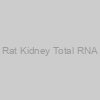 Rat Kidney Total RNA |
|
RR-901 |
Zyagen |
0.1mg |
EUR 160 |
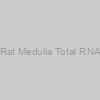 Rat Medulla Total RNA |
|
RR-206 |
Zyagen |
0.025mg |
EUR 160 |
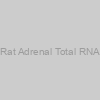 Rat Adrenal Total RNA |
|
RR-501 |
Zyagen |
0.025mg |
EUR 214 |
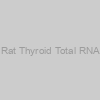 Rat Thyroid Total RNA |
|
RR-503 |
Zyagen |
0.025mg |
EUR 214 |
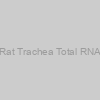 Rat Trachea Total RNA |
|
RR-602 |
Zyagen |
0.025mg |
EUR 214 |
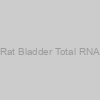 Rat Bladder Total RNA |
|
RR-902 |
Zyagen |
0.025mg |
EUR 160 |
 Rat Thalamus Total RNA |
|
RR-205 |
Zyagen |
0.025mg |
EUR 160 |
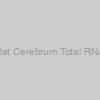 Rat Cerebrum Total RNA |
|
RR-209 |
Zyagen |
0.05mg |
EUR 160 |
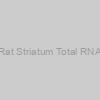 Rat Striatum Total RNA |
|
RR-214 |
Zyagen |
0.025mg |
EUR 160 |
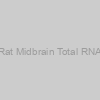 Rat Midbrain Total RNA |
|
RR-217 |
Zyagen |
0.05mg |
EUR 160 |
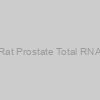 Rat Prostate Total RNA |
|
RR-408 |
Zyagen |
0.05mg |
EUR 160 |
To decide the mixed affect of the FocalPoint Guided Screener (GS) Imaging System (BD Diagnostics-TriPath, Burlington, North Carolina) and lean manufacturing ideas on the turnaround time (TAT) and productiveness of the gynecologic cytology operation. We established a baseline measure of the TAT for Papanicolaou exams. We then in contrast that to the efficiency after implementing the FocalPoint GS Imaging System and lean ideas. The latter included value-stream mapping, workflow modification, and a primary in-first out coverage.
